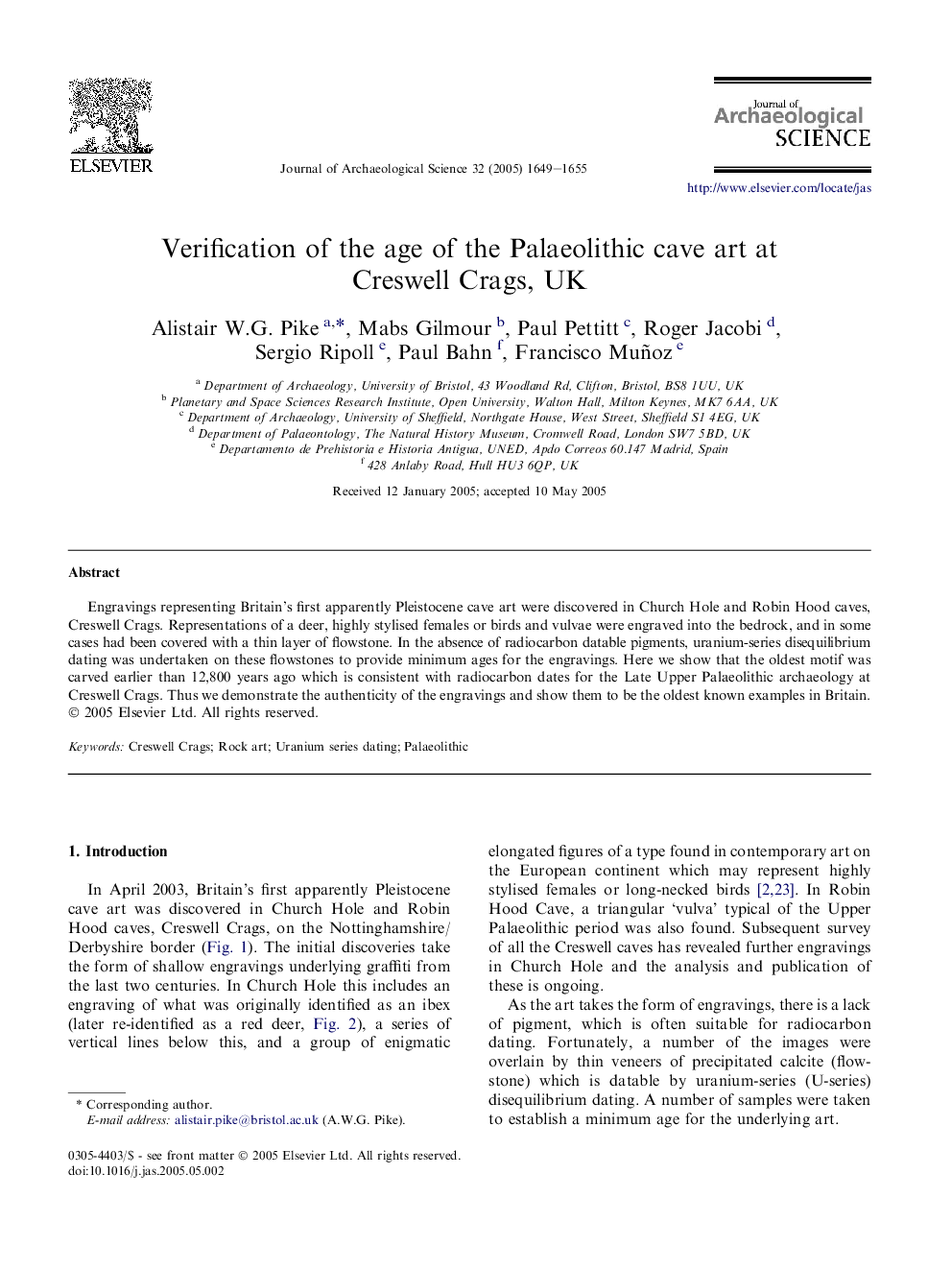| Article ID | Journal | Published Year | Pages | File Type |
|---|---|---|---|---|
| 10499371 | Journal of Archaeological Science | 2005 | 7 Pages |
Abstract
Engravings representing Britain's first apparently Pleistocene cave art were discovered in Church Hole and Robin Hood caves, Creswell Crags. Representations of a deer, highly stylised females or birds and vulvae were engraved into the bedrock, and in some cases had been covered with a thin layer of flowstone. In the absence of radiocarbon datable pigments, uranium-series disequilibrium dating was undertaken on these flowstones to provide minimum ages for the engravings. Here we show that the oldest motif was carved earlier than 12,800 years ago which is consistent with radiocarbon dates for the Late Upper Palaeolithic archaeology at Creswell Crags. Thus we demonstrate the authenticity of the engravings and show them to be the oldest known examples in Britain.
Related Topics
Physical Sciences and Engineering
Materials Science
Materials Science (General)
Authors
Alistair W.G. Pike, Mabs Gilmour, Paul Pettitt, Roger Jacobi, Sergio Ripoll, Paul Bahn, Francisco Muñoz,
